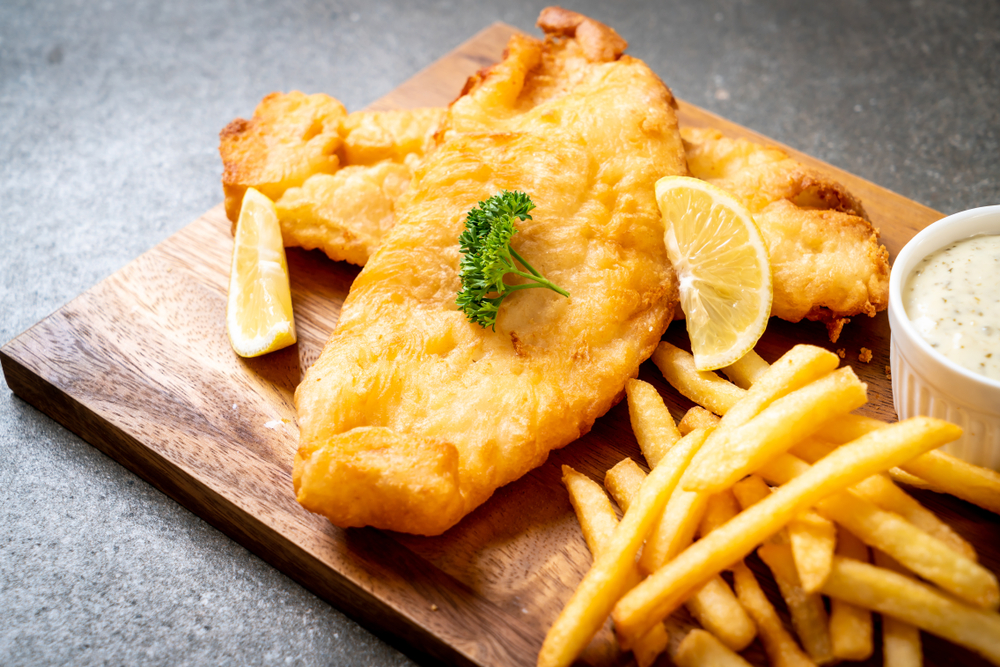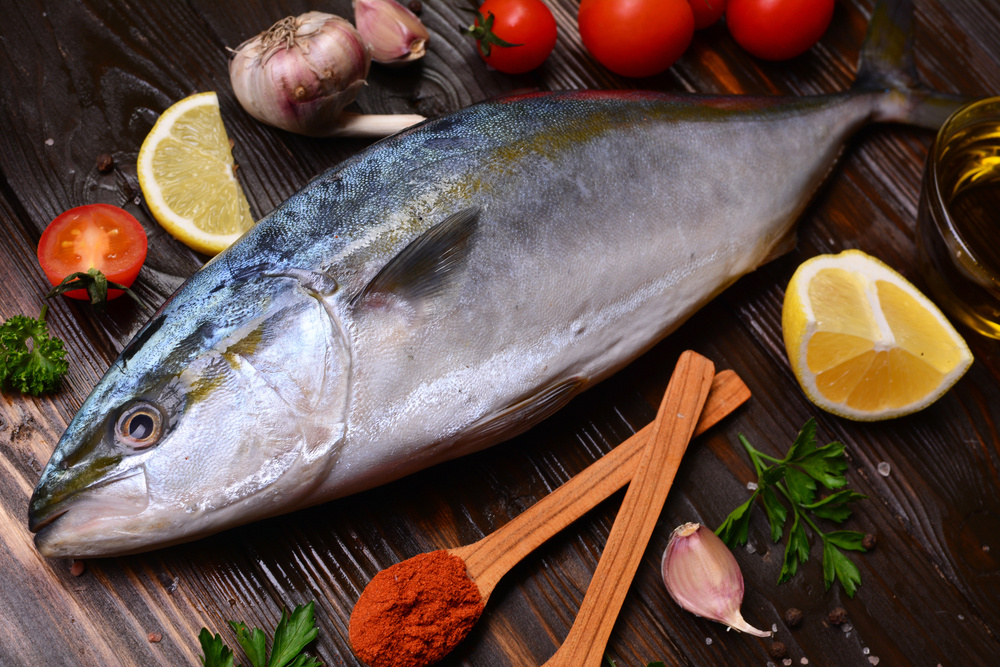Smoked salmon is a delicious delicacy enjoyed by many, but how long does it last?
The answer varies depending on various factors such as how it is stored, the type of smoked salmon, and whether it has been opened or not. Understanding these factors is crucial in ensuring that you consume smoked salmon that is safe and of high quality.
Factors affecting the shelf life of smoked salmon include the type of smoking process used, the quality of the fish, and the storage conditions.
Cold-smoked salmon, for example, has a shorter shelf life than hot-smoked salmon because it is not pasteurized. Additionally, smoked salmon that is not stored at the right temperature or has been exposed to air can spoil faster.
Knowing how to identify spoiled smoked salmon is also important in preventing food poisoning. Signs of spoilage include a sour smell, slimy texture, and discoloration.
Key Takeaways
- The shelf life of smoked salmon depends on factors such as the type of smoking process used, the quality of the fish, and the storage conditions.
- Spoiled smoked salmon can cause food poisoning and should be identified by its sour smell, slimy texture, and discoloration.
- Proper storage and handling of smoked salmon can help extend its shelf life and maintain its quality.
Understanding Smoked Salmon
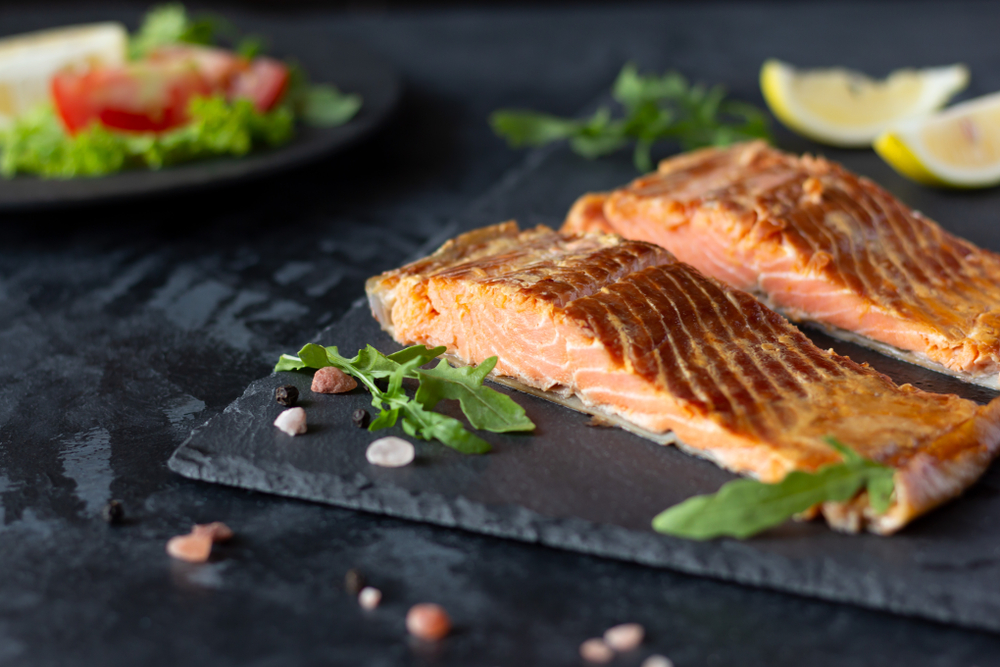
Smoked salmon is a delicious delicacy enjoyed by many. It is a type of fish that has been smoked to give it a unique flavor and texture. Understanding the different types of smoked salmon and the process of smoking salmon can help you appreciate this delicacy even more.
No products found.
Types of Smoked Salmon
There are different types of smoked salmon, including cold smoked salmon, hot smoked salmon, and lox. Cold smoked salmon is smoked at a lower temperature, typically below 90°F. This process gives the salmon a delicate flavor and texture.
Hot smoked salmon, on the other hand, is smoked at a higher temperature, typically above 120°F. This process gives the salmon a firmer texture and a more robust smoky flavor. Lox is a type of cold smoked salmon that has been cured in salt.
Process of Smoking Salmon
The process of smoking salmon involves curing the fish in a brine solution before smoking it. The brine solution typically contains salt, sugar, and other flavorings. Curing the fish helps to remove excess moisture and gives it a firmer texture.
After curing, the fish is rinsed and then smoked using wood chips or sawdust. The type of wood used can affect the flavor of the smoked salmon. Some common woods used for smoking salmon include alder, oak, and hickory.
Homemade smoked salmon is becoming increasingly popular, and many people are now smoking their salmon at home. The process of smoking salmon at home involves curing the fish in a brine solution and then smoking it using a smoker or grill.
It is essential to follow food safety guidelines when smoking salmon at home to ensure that it is safe to eat.
In conclusion, understanding the different types of smoked salmon and the process of smoking salmon can help you appreciate this delicacy even more.
Whether you prefer cold smoked salmon, hot smoked salmon, or lox, smoked salmon is a delicious and healthy addition to any meal.
Factors Affecting Shelf Life

Smoked salmon is a perishable food item, and its shelf life can be affected by several factors. Understanding these factors can help you maximize the freshness and quality of your smoked salmon.
Here are some of the crucial elements that can impact the shelf life of smoked salmon:
Storage Conditions
The storage conditions of smoked salmon can significantly affect its shelf life. Smoked salmon should always be refrigerated to maintain its freshness and prevent bacterial growth.
The ideal storage temperature for smoked salmon is below 40°F (5°C). At this temperature, smoked salmon can last for up to two weeks in the refrigerator.
However, if you plan to store smoked salmon for an extended period, it’s best to freeze it. Freezing smoked salmon can extend its shelf life for up to six months.
To freeze smoked salmon, wrap it tightly in plastic wrap or aluminum foil and place it in a freezer bag. Make sure to remove as much air as possible from the bag to prevent freezer burn.
Packaging Methods
The packaging method used for smoked salmon can also impact its shelf life. Smoked salmon can be packaged in several ways, including vacuum-sealed packs, airtight packaging, plastic wrap, and freezer bags.
Vacuum-sealed packs are the best packaging method for smoked salmon. The vacuum-sealing process removes all the air from the packaging, which helps to prevent bacterial growth and oxidation.
Vacuum-sealed smoked salmon can last for up to two months in the refrigerator and up to six months in the freezer.
If you don’t have access to vacuum-sealed packs, you can use airtight packaging, such as a plastic container with a tight-fitting lid. Make sure to remove as much air as possible from the container before sealing it. Airtight packaged smoked salmon can last for up to one week in the refrigerator.
If you have opened a package of smoked salmon, make sure to wrap it tightly in plastic wrap or aluminum foil before storing it in the refrigerator. Opened packages of smoked salmon can last for up to one week in the refrigerator.
In summary, proper storage conditions and packaging methods are crucial for maximizing the shelf life of smoked salmon. By following these guidelines, you can ensure that your smoked salmon stays fresh and delicious for as long as possible.
Identifying Spoiled Smoked Salmon
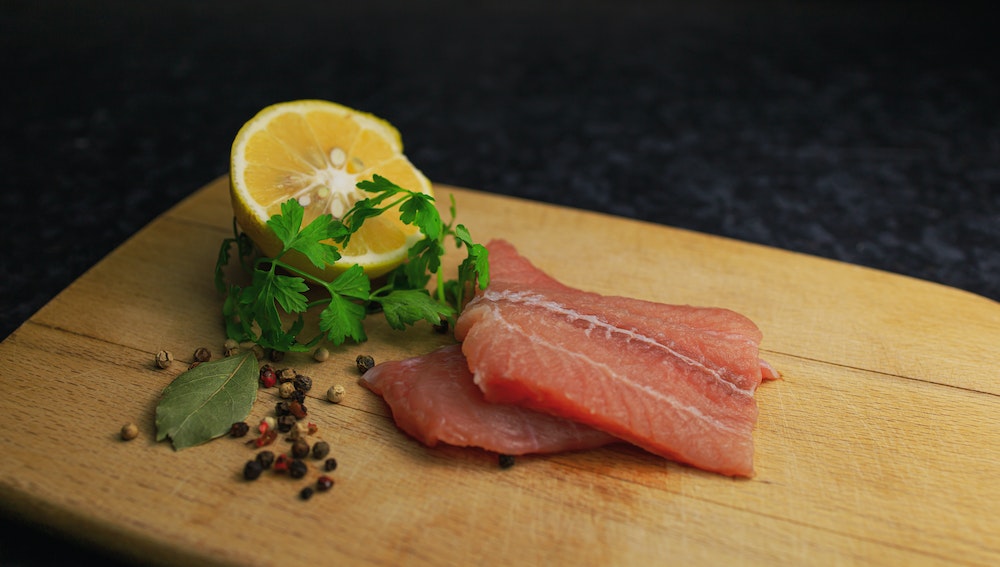
Smoked salmon is a perishable food item that has a limited shelf life. It is essential to know how to identify spoiled smoked salmon to avoid food poisoning.
Here are some indicators that can help identify spoiled smoked salmon.
No products found.
Visual and Tactile Indicators
Visual and tactile indicators can help identify spoiled smoked salmon. Here are some of them:
- Mold: If there is mold on the smoked salmon, it is a clear indication that it has gone bad. Mold can be of different colors, including white, green, black, and blue.
- Slimy film: If there is a slimy film on the smoked salmon, it is a sign that it has started to spoil. The slimy film can be a result of bacterial growth.
- Dull color: Fresh smoked salmon has a bright, shiny color. If the color has become dull or faded, it is an indication that it has gone bad.
- Texture: Fresh smoked salmon has a firm texture. If the texture has become soft or mushy, it is a sign that it has started to spoil.
Olfactory Indicators
Smell is another way to identify spoiled smoked salmon. Here are some olfactory indicators that can help identify spoiled smoked salmon:
- Smell: Fresh smoked salmon has a mild, smoky aroma. If it has a sour smell, it is an indication that it has gone bad.
- Sour smell: If the smoked salmon has a sour smell, it is a sign that it has started to spoil.
It is important to note that some of these indicators may not be present in every case of spoiled smoked salmon. Therefore, it is essential to use these indicators in combination with each other to identify spoiled smoked salmon accurately.
In conclusion, identifying spoiled smoked salmon is crucial to avoid food poisoning. By using the visual, tactile, and olfactory indicators mentioned above, one can identify spoiled smoked salmon and avoid consuming it.
Health Risks and Safety Measures
Potential Health Risks
Smoked salmon is generally considered safe to eat, but it can pose some health risks if not handled properly. One of the main concerns is the risk of food poisoning caused by bacteria such as Listeria and Salmonella.
These bacteria can cause symptoms such as nausea, vomiting, diarrhea, and fever. In severe cases, they can lead to hospitalization or even death, especially in vulnerable populations such as pregnant women, young children, and the elderly.
Another potential risk is botulism, a rare but serious illness caused by a toxin produced by the bacterium Clostridium botulinum. This bacterium can grow in low-acid foods such as smoked salmon and produce a toxin that can cause muscle weakness, paralysis, and even death.
Safety Measures
To minimize the risk of food poisoning and other health risks, it is important to follow some safety measures when handling and storing smoked salmon.
Here are some tips:
- Refrigeration: Smoked salmon should always be kept refrigerated at a temperature below 40°F (4°C) to prevent bacterial growth. If you buy smoked salmon from a store, make sure it was kept refrigerated and check the sell-by or use-by date before buying. If you are not going to eat it right away, put it in the refrigerator as soon as possible.
- Proper Storage: Smoked salmon should be stored in an airtight container or wrapped tightly in plastic wrap or foil to prevent air and moisture from getting in. This will help to maintain its freshness and prevent the growth of bacteria and other microorganisms.
- Use-by Date: Always check the use-by date on the package before buying or consuming smoked salmon. Do not eat it if it has passed the use-by date.
- Defrosting: If you need to defrost smoked salmon, do it in the refrigerator, not at room temperature. This will prevent the growth of bacteria and ensure that the salmon stays fresh.
- Cooking: If you are unsure about the safety of smoked salmon, you can cook it before eating. This will kill any bacteria or other microorganisms that may be present.
By following these safety measures, you can minimize the risk of food poisoning and other health risks associated with smoked salmon.
Storing and Freezing Smoked Salmon
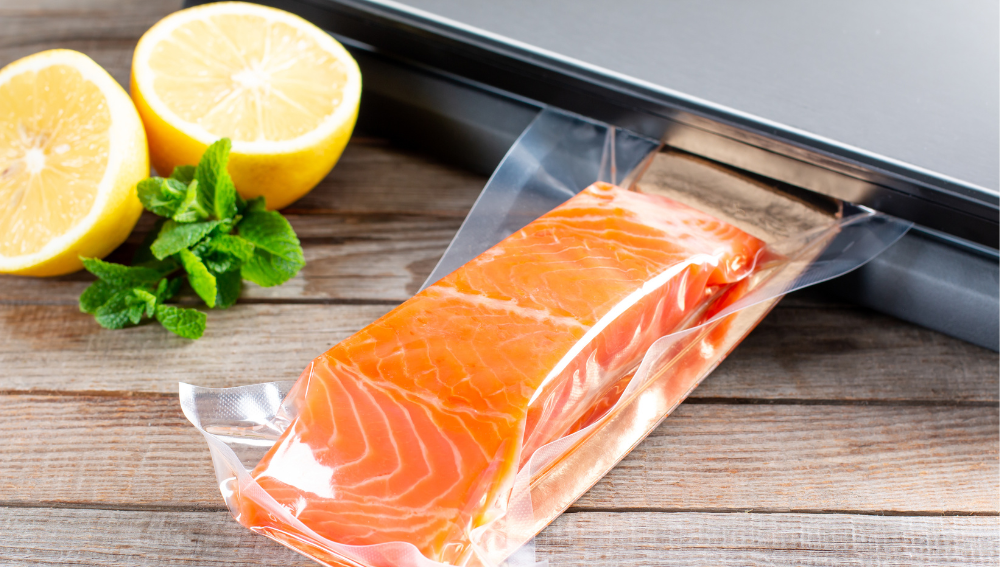
Refrigeration and Freezing Techniques
Smoked salmon is a perishable food that requires proper storage to maintain its quality and prevent spoilage. When refrigerated, smoked salmon can last up to three weeks if stored correctly.
It is best to keep the smoked salmon in its original packaging or wrap it tightly in heavy-duty aluminum foil to prevent air exposure. If the original packaging has been opened, transfer the smoked salmon to an airtight container before refrigerating.
When freezing smoked salmon, it is essential to use proper techniques to avoid freezer burn. Freezer burn occurs when the moisture in the food evaporates, causing it to dry out and develop ice crystals.
To prevent freezer burn, wrap the smoked salmon tightly in heavy-duty aluminum foil or plastic wrap before placing it in an airtight container. Make sure to label the container with the date of freezing and use the frozen smoked salmon within six months for the best quality.
Tips for Prolonging Shelf Life
To prolong the shelf life of smoked salmon, it is essential to follow some tips. First, always store smoked salmon in the coldest part of the refrigerator, which is usually the bottom shelf. Second, do not freeze smoked salmon immediately after smoking it.
Cool the smoked salmon for at least three hours before packaging it for the freezer. Third, never defrost smoked salmon in the microwave. Instead, defrost it in the refrigerator overnight or by placing it in cold water.
Finally, always use the smoked salmon within six months of freezing it to ensure the best quality.
In summary, proper storage and freezing techniques are crucial for maintaining the quality and prolonging the shelf life of smoked salmon. When refrigerating, keep it in its original packaging or wrap it tightly in heavy-duty aluminum foil.
When freezing, wrap it tightly in heavy-duty aluminum foil or plastic wrap and place it in an airtight container. Follow the tips mentioned above to prevent freezer burn and prolong the shelf life of smoked salmon.
Using Smoked Salmon
Incorporating Smoked Salmon into Meals
Smoked salmon is a versatile ingredient that can be used in a variety of meals. It can be enjoyed on its own, or incorporated into different dishes to add flavor and protein.
Here are some ideas for incorporating smoked salmon into meals:
- Bagels and Lox: Smoked salmon is a classic topping for bagels. Spread some cream cheese on a toasted bagel, and top it with slices of smoked salmon and thinly sliced red onion for a delicious breakfast or lunch.
- Salads: Smoked salmon can be added to salads for a protein boost and a unique flavor. It pairs well with greens, avocado, and citrus fruits.
- Pasta: Smoked salmon can be added to pasta dishes for a twist on traditional seafood pasta. Try tossing smoked salmon with linguine, olive oil, garlic, and cherry tomatoes for a quick and easy dinner.
Thawing and Cooking Smoked Salmon
If you have frozen smoked salmon, it’s important to thaw it properly before using it in a recipe. Here are some tips for thawing and cooking smoked salmon:
No products found.
- Thawing: To thaw smoked salmon, place it in the refrigerator overnight. If you need to thaw it quickly, you can place it in a sealed plastic bag and submerge it in cold water for a few hours.
- Cooking: Smoked salmon is already cooked, so it doesn’t need to be cooked again. However, it can be heated up if desired. To heat up smoked salmon, place it in a microwavable dish with a wet paper towel over it. Microwave on medium heat for 120 seconds, checking the temperature periodically. If it’s not hot enough, microwave for another 60 seconds.
Overall, smoked salmon is a delicious and healthy ingredient that can be used in a variety of meals. Whether you’re making bagels and lox or adding it to a salad, smoked salmon is sure to add flavor and nutrition to your dish.
Related post: How Long Does Cooked Salmon Last in Refrigerator
Frequently Asked Questions
How long does smoked salmon last when vacuum-sealed?
When vacuum-sealed, smoked salmon can last up to two weeks in the refrigerator. Freezing it can extend its shelf life up to six months. However, it is important to note that the quality and flavor of the salmon may deteriorate over time.
How long does smoked fish last in the refrigerator?
Smoked fish, including salmon, can last up to two weeks in the refrigerator when properly stored. It is important to keep it in an airtight container or wrapped tightly in plastic wrap to prevent it from drying out or absorbing odors from other foods.
How can you tell if smoked salmon is bad?
You can tell if smoked salmon is bad by checking for any signs of discoloration, sliminess, or an off smell. If the salmon appears to be discolored or slimy, or if it has a strong, unpleasant odor, it is best to discard it.
How long will smoked fish last unrefrigerated?
Smoked fish should never be left unrefrigerated for an extended period of time. It is best to consume it within two hours of being removed from the refrigerator. Leaving it out for longer than two hours can increase the risk of bacterial growth and spoilage.
How long does cured salmon last in the fridge?
Cured salmon, also known as gravlax, can last up to two weeks in the refrigerator when properly stored. It should be tightly wrapped in plastic wrap or stored in an airtight container to prevent it from drying out or absorbing odors from other foods.
Can smoked salmon go bad?
Yes, smoked salmon can go bad. It is important to properly store it in the refrigerator or freezer and to consume it within a reasonable amount of time to avoid spoilage.
Checking for any signs of discoloration, sliminess, or an off smell can help determine if the salmon has gone bad.




